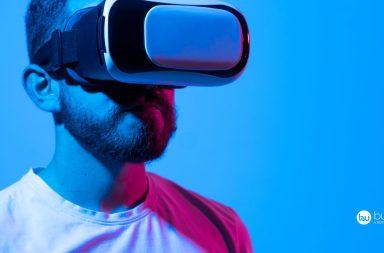Halverson and colleagues have made a significant contribution to our comprehension of emoji usage among healthcare professionals, highlighting the potential of these symbols to enhance communication within the healthcare domain. By scrutinizing 1319 clinical text message threads, they revealed that 7% of these conversations featured emojis or emoticons. These symbols primarily conveyed emotional content (61%) or facilitated the opening, maintenance, or closure of communication channels (32%). This research bears critical implications, suggesting that emojis and emoticons play a vital role in professional medical communication.
In essence, language involves associating visual or verbal information with meaning, and the ultimate goal of medicine is to foster human understanding to provide effective treatment. Traditionally, healthcare professionals have employed various communication methods to comprehend and treat patients, including verbal and written language, physical examinations, and numerical data such as vital signs and laboratory results. With the emergence of digital health technology, clinicians are adopting novel communication modes, such as patient-reported outcomes.
For instance, consider the amalgamation of English, numeric, and emoji elements in the phrase “Sad-[HR-120]-🔪.” This effectively conveys complex patient information, signifying concern for a patient with potential suicidal ideation in a healthcare context. While concerns about incorporating pictorial languages in healthcare exist, it’s crucial to recognize that these languages are already widely used in natural language settings.
Take, for instance, the representation of “Heart” in three different languages: “Heart-心- ![]() “.
“.
Despite the differences, they are all encoded in Unicode UTF-8 as a semantically interoperable language: “EE5 BF 83 20 F0 9F AB 80 20 68 65 61 72 74.”
Emoji to convey meaning
Within the realm of physician-physician communication, emojis can serve as valuable tools for conveying meaning. The authors found that the thumbs-up emoji (👍) was the most commonly used, accounting for 39% of all emojis.
Their study suggested that this emoji was employed to acknowledge the receipt of a message or to signal approval or consent. Understanding the evolution of 👍 as an alternative representation of “OK” is crucial, especially in contexts such as medical and legal liability.
Effective communication is paramount to successful treatment and care. However, certain healthcare scenarios, such as stroke, brain injury, or vocal impairments, can create significant communication barriers, including loss of voice or difficulty speaking while on mechanical ventilation. Research into universally accessible visual point and tap language inputs, such as those in the Unicode Standard, can help overcome these barriers and enhance patient outcomes.
To harness the potential of Unicode and emojis in medicine, numerous ongoing efforts have emerged. One such endeavor involves translating paper-based patient-reported outcome tools, like the Wong-Baker Face Pain Scale, into a digital and semantically interoperable emoji-based visual analog scale: 😀🙂😐🙁☹️😭. This open-source scale is readily available to all users and is preinstalled on devices using Unicode, including iOS, Android, Windows, and most modern electronic medical record systems.
Expanding the scientific and medical representation in evolving visual languages
Presently, emojis exist for common items like 🥪 and 💩, but there’s a noticeable absence of emojis representing most organs of the body involved in the digestion process. While Unicode version 13.0 introduced anatomical emojis for the heart (![]() ) and lungs (
) and lungs (![]() ), additional emojis for anatomically accurate organs (stomach, intestine, liver, kidneys) and medical equipment (IV bags, weight scales) are needed.
), additional emojis for anatomically accurate organs (stomach, intestine, liver, kidneys) and medical equipment (IV bags, weight scales) are needed.
Campaigns for individual medically relevant emojis, such as the anatomical kidney, stomach, and liver, have garnered substantial support from relevant societies and require ongoing attention. However, to establish a standardized set of medically relevant emojis, medical societies and organizations must come together to endorse a comprehensive set of universally recognized and understood symbols. While the Unicode Consortium has expressed interest in third-party emoji-style encoding, consensus from medical authorities on a set of medical emojis is essential to guide the Consortium in expanding the range of medical emojis, ensuring their accurate representation and universal understanding in healthcare communication.
As the Unicode Standard continues to expand, interpreting and summarizing these characters for digital patient-reported outcomes will become increasingly challenging for healthcare professionals. Machine learning algorithms offer a promising solution.
It is possible to establish a baseline for a patient’s symptoms based on his or her medical history by leveraging previous patient information. Supervised learning can do this.
For instance, ⚡🧠 can provide critical information in cases involving a history of hypertension and new aphasia in the emergency department. This approach can generate personalized interpretations of new patient data, enabling healthcare professionals to promptly identify and respond to critical information, potentially improving patient outcomes.
Enhancing communications in healthcare through emoji
The use of emojis in healthcare communication offers several advantages, including universal appeal and accessibility to diverse populations.
By promoting more effective communication between patients and healthcare professionals, as well as among healthcare professionals, a universal emoji-based language system with a common agreement on meanings can be developed.
Acknowledging clinician-clinician communication is essential for a comprehensive understanding of this potential. As digital health technology advances, embracing the potential of emojis as a language for healthcare can substantially enhance communication, ultimately leading to improved patient care.



